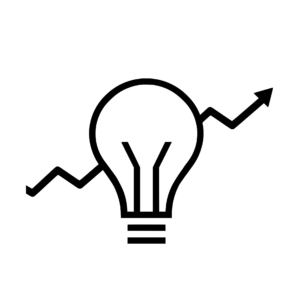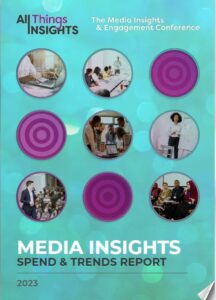Keeping A Pulse on Market Trends
Research intelligence means keeping up with your competitors, staying up to date on technology, and having a pulse on industry trends. A recent blog, “Market Research Trends to Conquer 2023,” by Similarweb’s Liz March, identified some of the top trends creating waves in the industry.
It should probably come as no surprise that artificial intelligence is a top trend of the year. Businesses have vast amounts of data that need to be collected and analyzed, more than humans can do alone. As noted by Similarweb, AI has actually been used in the industry for a decade but the technology has become smarter and more widely adopted as the need for market research, and insights, has grown. But AI shouldn’t be thought of as replacing humans just yet, as humans are needed to develop strategies and apply insights to the business.
AI is not the only game in town. Another industry trend is the need for mobile app intelligence. Apps are impacting the way consumers go about their lifestyles and the way organizations conduct business. The ability for companies to monitor and track app intelligence is growing, notes Similarweb. App intelligence is a nice complement to web intelligence to track traffic and consumer behavior but the reliance on apps is growing in the marketplace. “App intelligence gives people the ability to spot emerging threats and take action when and where it’s needed,” observes Similarweb.
Other key trends this year, according to Similarweb: Humanity in the customer experience (think personalization); the growth of social listening tools; inclusive research; monitoring adjacent markets; market-tech audits; consumer and brand value alignment; and automation and efficiency. In some ways, that brings it back to AI. As Similarweb notes, “Market research isn’t all exciting insights and analysis. A lot of it is tedious – collecting research, organizing and categorizing information, sending follow-up emails, and much more. The latest trends in market research demand that you automate these time-consuming tasks.”
Diving into the Future of Marketing Research
All Things Innovation recently looked at the rise of AI, “Diving Into Humanity-Centric Innovation.” With the continued emergence and evolving development of artificial intelligence, there rises a question of how humans and AI can work together more efficiently to better our lives in the future. For the innovation community, AI is a mostly positive and useful tool to crunch the data, analyze results and leverage its capabilities to move forward the company’s strategic and product development efforts.
TMRE will be held this year from October 23-25, at the Gaylord Rockies Event & Convention Center, Denver, CO. In the session, “Seven Major Problems in Insights Today (and Some Solutions),” Jason Jacobson, Director of Consumer Insights, Sekisui House, looks at how the traditional marketing research methods have failed to keep up with the changing times, leaving us unable to accurately predict human behavior and provide valuable insights. The industry is plagued with archaic survey techniques, ratings scales, and flawed sample structures that fail to capture the nuances of human communication and decision-making. Thankfully, recent advances in conversational research, cutting-edge sampling techniques, and neuroscience have paved the way for an industry evolution.
Register for TMRE now to see the session.
Identifying Top Market Research Trends
Several market research and insights industry trends are shaping the way businesses gather and utilize data. While trends can evolve rapidly, we thought we’d ask ChatGPT to identify some prominent trends in the industry.
- Digital Transformation: The industry is undergoing a significant digital transformation, with more research methods and data collection processes being conducted online. This includes online surveys, social media monitoring, web analytics, and other digital tools for gathering insights.
- Big Data and Advanced Analytics: The rise of big data allows researchers to analyze vast amounts of information to uncover insights. Advanced analytics techniques such as machine learning and artificial intelligence are being used to extract meaningful patterns from large datasets.
- Automation and AI-Powered Insights: Automation tools and AI-driven platforms are being adopted to streamline research processes, from data collection to analysis. AI-powered algorithms are assisting in sentiment analysis, trend prediction, and consumer behavior modeling.
- Real-Time Insights: Businesses are seeking real-time insights to respond swiftly to changing market conditions. Technologies that offer quick data analysis and reporting are more prevalent.
- Mobile Research: With the increasing use of smartphones, mobile research is gaining traction. Researchers are finding ways to collect data through mobile apps, SMS surveys, and location-based technologies.
- Consumer-Centric Approach: Businesses are shifting towards a more consumer-centric approach, focusing on understanding customer needs, preferences, and behaviors in-depth. This leads to more personalized marketing and product strategies.
- Ethnographic Research: Ethnographic research, which involves immersing researchers in the target audience’s environment to gain a deeper understanding, is becoming more prevalent. This approach allows for insights that go beyond survey responses.
- Behavioral Economics and Neuromarketing: Insights from behavioral economics and neuromarketing are being integrated into research strategies to better understand subconscious consumer behaviors and decision-making processes.
- Social Listening and Sentiment Analysis: Brands are increasingly using social media listening tools to monitor conversations and sentiments around their products or services. This helps in understanding customer perceptions and identifying potential issues.
- Sustainability and Social Responsibility: Consumer preferences for sustainable and socially responsible products are influencing market research. Businesses are conducting studies to gauge the demand for environmentally friendly and ethically produced goods.
- Privacy and Data Security: As data privacy concerns grow, the market research industry is adapting to stricter regulations such as GDPR and CCPA. Ensuring data security and obtaining proper consent is essential.
- Cross-Channel Insights Integration: Researchers are working on integrating insights from various sources and channels to create a holistic view of customer behavior and preferences. This helps in creating more comprehensive strategies.
Searching for the Right Solution
Consumer behavior is always evolving. And the resilient market research industry has evolved along the way as new trends emerge to meet the consumer. The year 2023 has often been labeled a year of uncertainty. Are you going back to the basics when it comes to market research? Or are you all-in on the latest technology? Whether your firm is looking to do more with less or investing in new techniques or technologies to make more of a strategic impact, whether you are sticking with proven methodologies or experimenting with new ideas, one thing is for certain. New technology and tools need to be useful and take a people-centric approach.
As simply noted in a blog, “Market research trends: Predictions on what’s next for the insights industry:” “In the end, the trends that will have an enduring impact are those that deliver market research ROI and make the life of the busy insight professional easier and more impactful,” says Kelvin Claveria, Director of Demand Generation at Rival Technologies.
Video courtesy of Harvard Business Review
Contributor
-

Matthew Kramer is the Digital Editor for All Things Insights & All Things Innovation. He has over 20 years of experience working in publishing and media companies, on a variety of business-to-business publications, websites and trade shows.
View all posts

























































